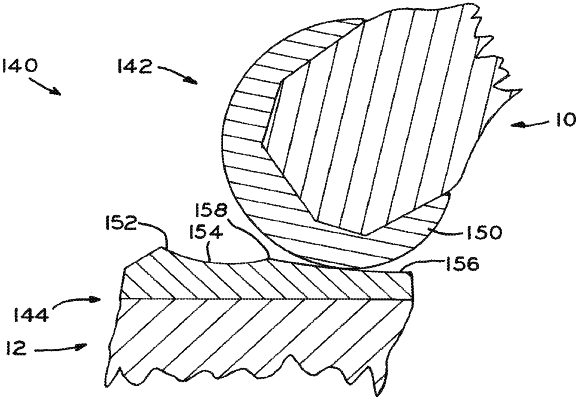| CPC A61F 2/38 (2013.01) [A61F 2/3859 (2013.01); A61F 2/3886 (2013.01); A61F 2/389 (2013.01); A61F 2002/3863 (2013.01)] | 16 Claims |

|
1. A knee prosthesis that articulates between a substantially extended position and a flexed position, the knee prosthesis comprising:
a femoral component including:
a medial condyle; and
a lateral condyle; and
a tibial component including:
a medial surface sized to receive the medial condyle of the femoral component; and
a lateral surface sized to receive the lateral condyle of the femoral component;
wherein the tibial component includes a concavity configured to mate with the lateral condyle such that the femoral and tibial components are more constrained against at least one of the following movements when the knee prosthesis is in the substantially extended position than when the knee prosthesis is in the flexed position:
a rotational movement of the femoral component relative to the tibial component about an axis; and
an anterior movement of the tibial component relative to the femoral component;
whereby the knee prosthesis resists at least one of the rotational movement and the anterior movement to a greater extent when the knee prosthesis is in the substantially extended position than when the knee prosthesis is in the flexed position;
wherein the lateral surface of the tibial component comprises:
an anterior-most point;
an anterior section including the concavity extending posterior of the anterior-most point;
a posterior section extending from the anterior section at a decline in a posterior direction; and
a posterior-most point positioned posterior of the posterior section; and
wherein the medial surface of the tibial component comprises:
an anterior-most point;
a medial articulating surface extending posterior of the anterior-most point; and
a posterior-most point positioned posterior of the medial articulating surface;
wherein the medial articulating surface extends between the anterior-most point and the posterior-most point continuously in a configuration of a traditional cruciate retaining prosthesis profile.
|